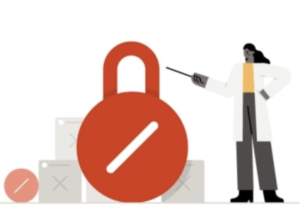Local SEO (Search Engine Optimization) is the process of improving your website experience and establishing your brand’s authority and relevance so that it ranks high on Google, Maps, and other search engines.
If you need any convincing of the importance of SEO just consider these statistics:
- 30% of all mobile searches are related to location.
- According to Google, 76% of people who search for something nearby on their phones visit the business within a day.
- 28% of searches for something nearby result in a purchase.
See a complete list of local SEO stats
So How Does Local SEO Work?
Map Pack Results
The map pack (also known as “The Local Pack”) is a Google SERP feature that shows the top local business listings and a map. It often appears at the very top of Google’s search results for local searches.
The map pack results are influenced by various factors, such as your location, your Google My Business profile, your online reviews, and your NAP citations (more on these later).
Organic Search Results
The “regular” organic search results are the “blue links” that we’re all familiar with. They usually appear below the map pack results.
The organic search results are influenced by factors such as your website content, your offsite backlinks (eg. having links to your site from other websites), and your site’s technical configuration (e.g. fast site speed and no weird buggy stuff.)
But How to Do Local SEO?
Local SEO is not a one-time thing. It requires ongoing effort and attention to keep up with the competition and Google’s changing ranking priorities. However, there are some key steps you can take to improve your SEO performance.
Step 1: Find Local Keywords
Local keywords are the words and phrases that people use to search for the local services you offer. If you’re a chiropractor in Los Angeles, some obvious keywords might be:
- Chiropractic adjustment
- Chiropractic treatment for back pain
- Los Angeles chiropractor
- Best chiropractor in Los Angeles
- Chiropractic services in Los Angeles
- Sports chiropractor in Los Angeles
- Chiropractic massage in Los Angeles
To find more local keywords, you can use tools like Ahrefs’ Keywords Explorer or Google’s Keyword Planner. You can also look at what your competitors are ranking for and what questions your customers are asking online.
Step 2: Optimize Your Website
Once you have a list of local keywords, you need to optimize your website for them. This means creating relevant and engaging content that answers the search intent and showcases your expertise and authority.
Some best practices for optimizing your website content are:
- Include your main keyword in your title tag, meta description, URL, and headings.
- Use variations and synonyms of your main keyword throughout your content.
- Add location modifiers to your keywords where appropriate (e.g., los angeles chiropractor).
- Use schema markup to provide structured data about your business (e.g., name, address, phone number, opening hours).
- Add internal links to other relevant pages on your website.
- Add external links to authoritative sources that support your claims or provide additional information.
- Use images, videos, or other media to enhance your content and make it more appealing.
- Make sure your website is fast, mobile-friendly, secure, and easy to navigate.
Step 3: Claim and Optimize Your Google My Business Profile
Google My Business (GMB) is a free tool that allows you to manage how your business appears on Google Search and Maps. It’s one of the most important factors for ranking in the map pack results.
To claim and optimize your GMB profile, you need to:
- Verify your business ownership with Google.
- Fill out all the relevant information about your business (e.g. name, address, phone number, category, description).
- Choose a primary and secondary category that best describes your business.
- Add photos and videos that showcase your products, services, team, or location.
- Encourage customers to leave reviews and respond to them promptly and professionally.
- Post regular updates about your business (e.g. offers, events, news).
- Use the Q&A feature to answer common questions from customers or prospects.
Step 4: Build NAP Citations
NAP citations are online mentions of your business name, address, and phone number. They help Google and customers to verify your business information and location.
NAP citations can appear on various platforms, such as:
- Online directories (e.g., Yelp, Yellow Pages, BBB)
- Social media platforms (e.g., Facebook, Twitter, Instagram)
- Local websites (e.g., chamber of commerce, local newspapers, local blogs)
To build NAP citations, you need to:
- Find relevant and reputable platforms where you can list your business.
- Ensure that your NAP information is consistent and accurate across all platforms.
- Update your NAP information whenever it changes (e.g., moving to a new location, or changing your phone number).
Step 5: Get Local Backlinks
Backlinks are links from other websites to your website. They signal to Google that your website is trustworthy and authoritative.
Local backlinks are backlinks from websites that are relevant to your location or industry. They help Google and customers recognize your local relevance and reputation.
Some ways to get local backlinks are:
- Sponsor or participate in local events or organizations and get links from their websites.
- Reach out to local influencers or journalists and pitch them your story or offer.
- Join local online communities or forums and share your expertise and resources.
To Wrap Up
Local SEO is a powerful way to get more customers from Google searches. By following the steps above, you can improve your online presence and get great results in the map pack and organic results.






